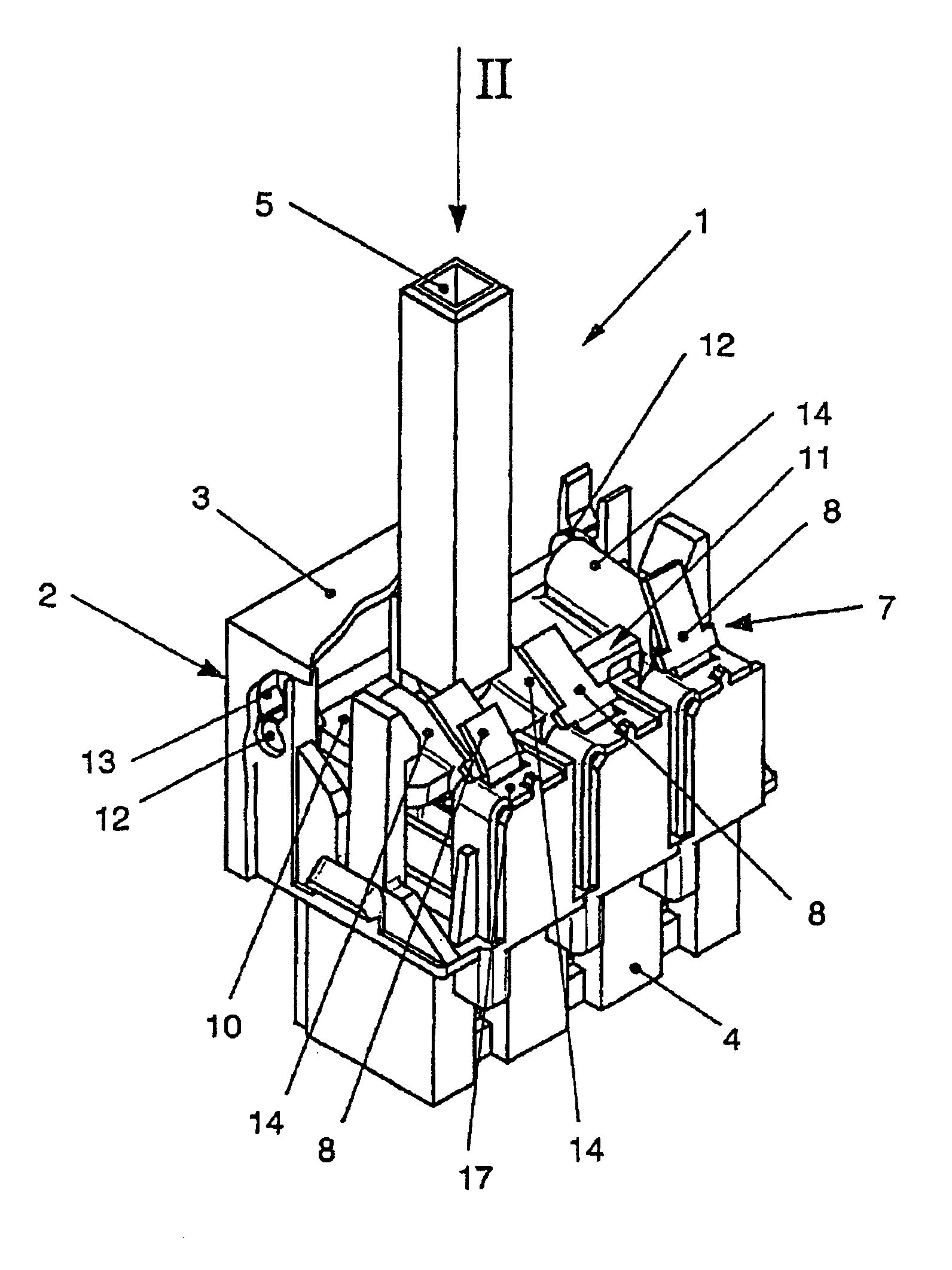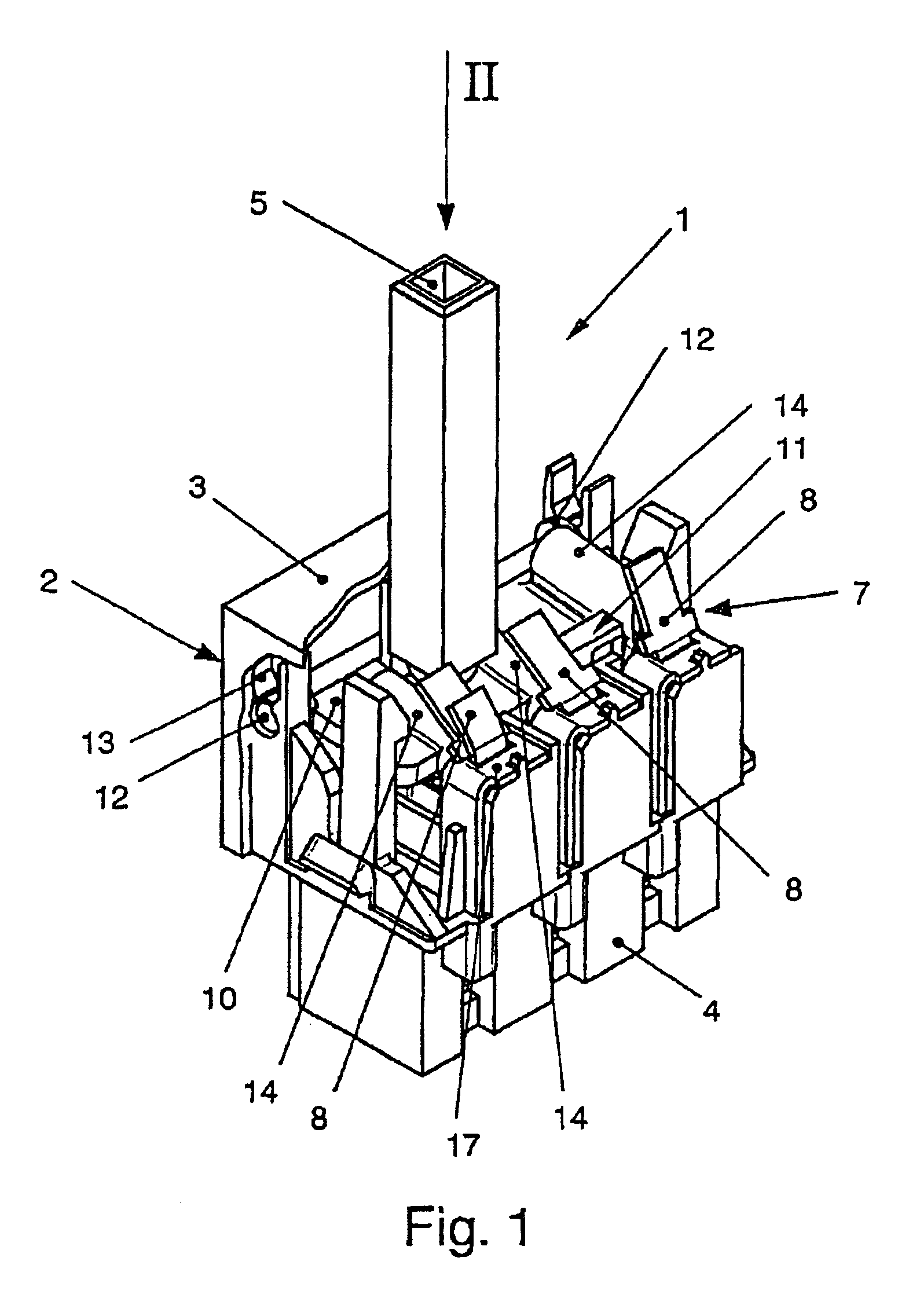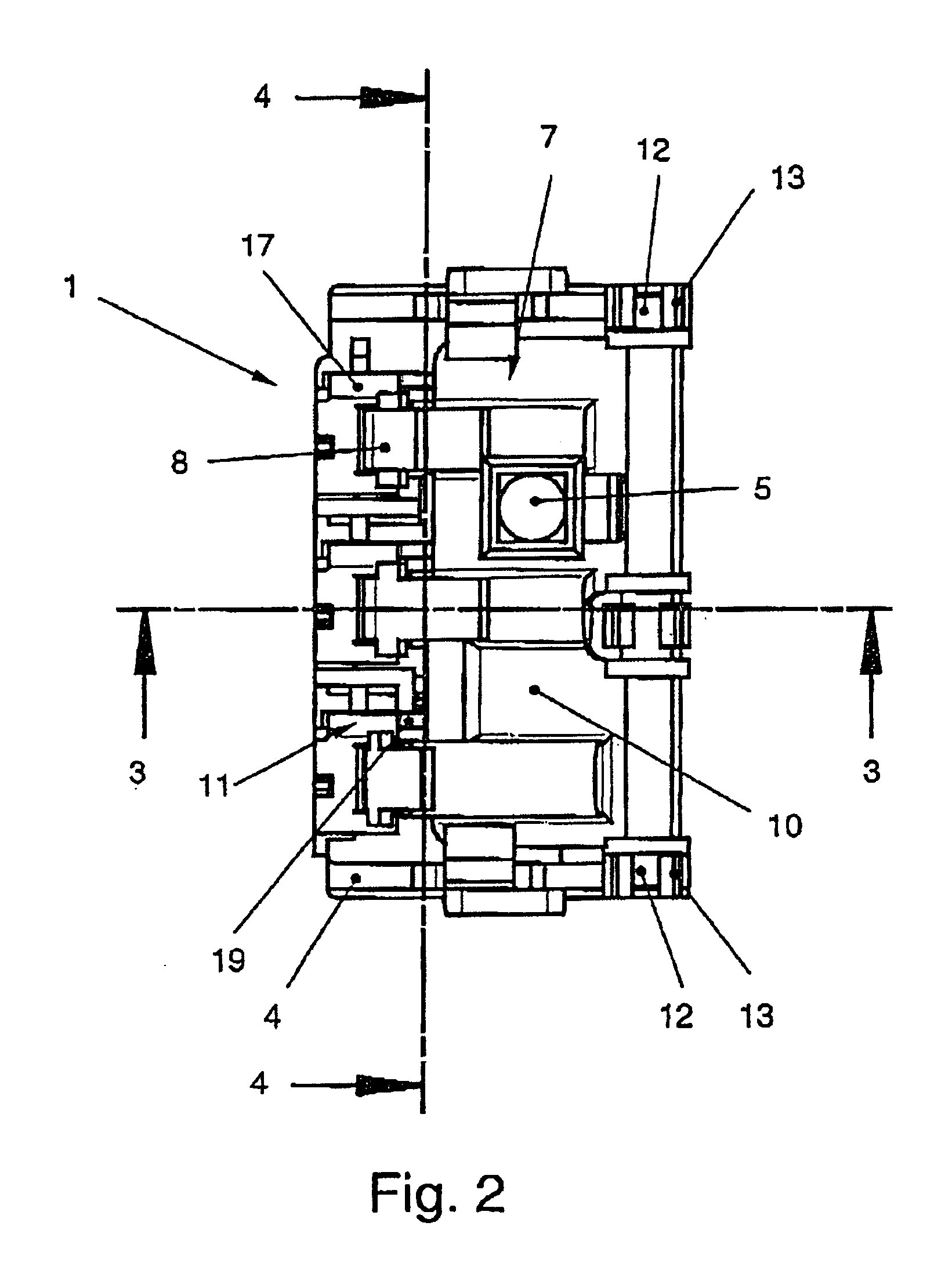Electric switch
a technology of electric switch and switch body, which is applied in the direction of electric switch, contact mechanism, electrical apparatus, etc., can solve the problems of not being able to reduce the actuating displacement of the switch, and achieve the effect of reducing the installation space required for the switch and contributing to the compactness of the switch
- Summary
- Abstract
- Description
- Claims
- Application Information
AI Technical Summary
Benefits of technology
Problems solved by technology
Method used
Image
Examples
Embodiment Construction
[0032]Shown in FIG. 1 is an electric switch 1 according to a first exemplary embodiment, which is suitable for switching a high load. The switch 1 may be used for example as a power switch for an electrical appliance. The switch 1 has a housing 2, which in FIG. 1 is merely represented in a schematic and broken-open form and comprises a cover 3 and a base 4. Protruding out of the housing 2 on the upper side of the cover 3 is an actuation-member 5. The part of the actuation member 5 protruding from housing 2 is accessible to the user for manual operation of the switch 1. The actuation member 5 is formed in the present case as a pushbutton which can be moved substantially linearly against the force of a spring 20, as can be seen in FIG. 4. On the underside, the electrical terminals 6 of the switch 1 that can be seen in FIG. 3 are located in the base 4.
[0033]The switch 1 has a three-pole contact system 7, as can be seen from FIG. 1. As FIG. 3 also reveals, the contact system 7 comprises...
PUM
 Login to View More
Login to View More Abstract
Description
Claims
Application Information
 Login to View More
Login to View More - R&D
- Intellectual Property
- Life Sciences
- Materials
- Tech Scout
- Unparalleled Data Quality
- Higher Quality Content
- 60% Fewer Hallucinations
Browse by: Latest US Patents, China's latest patents, Technical Efficacy Thesaurus, Application Domain, Technology Topic, Popular Technical Reports.
© 2025 PatSnap. All rights reserved.Legal|Privacy policy|Modern Slavery Act Transparency Statement|Sitemap|About US| Contact US: help@patsnap.com



